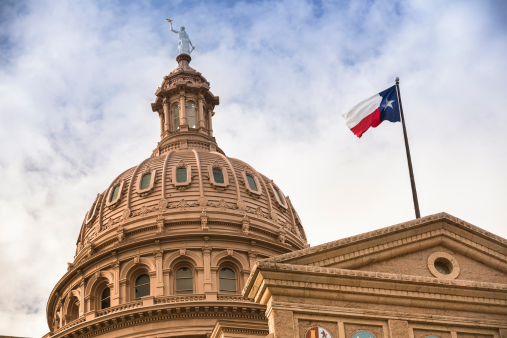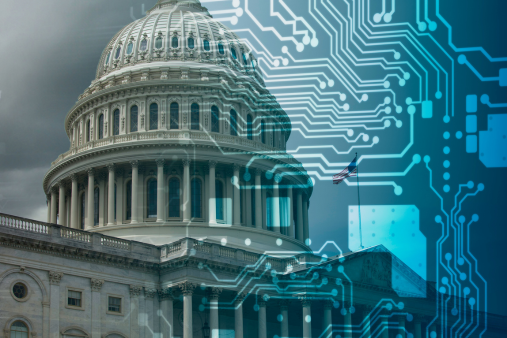Businesses can endure substantial property damage and, perhaps more importantly, lost revenue from civil disruptions caused by rioting and vandalism. Fortunately, business owners have a multitude of coverage options for these disruptions and should firmly resist an insurer’s attempt to deny or limit coverage. Assume you own the fictional pub “Paddy’s Pub” on Sunny Lane in South Philadelphia. One evening, South Philadelphia residents peacefully march down Sunny Lane in protest of the latest government budgeting decision. At some point, rioting and vandalism ensue and a few residents begin vandalizing businesses on Sunny Lane—including Paddy’s Pub. To contain the situation, the police department shuts down Sunny Lane for the remainder of the day. What coverage may be triggered? Commercial Property Coverage: Upon first entering Paddy’s Pub, you notice the storefront glass is shattered ($10,000 to replace), the green door is off its hinges ($500 to replace), the pool table is slashed open ($2,000 to replace), the bar stools are broken ($5,000 to replace), and several food and beverage items are missing ($40,000 to replace). Paddy’s Pub likely has coverage under its commercial property policy for its damaged property and stolen merchandise (total damage: $57,500), which is subject to policy limits, sublimits, and deductibles. For example, Paddy’s Pub may have a $5,000 deductible and a $2,500 sublimit for the storefront glass. In that instance, Paddy’s Pub could recover $45,000 of the $57,500 in damages to its property and stolen merchandise. In general, standard commercial property policies cover physical loss or damage to the insured’s building and contents as long as the damage was caused by a covered peril. Civil commotion, rioting, and vandalism usually are covered perils or, if a policy is written on a broader form, they are not usually excluded perils. In contrast, losses as a result of war and military action often are excluded perils, though policy language varies on exactly what is excluded. If Paddy’s Pub has “replacement cost” coverage, it may recover the costs to replace the damaged property with new property, usually limited by the policy to “like kind and quality.” Otherwise, Paddy’s Pub may receive only the “actual cash value” of the property at the time of loss. The current value of any item in Paddy’s Pub is minimal, so “replacement cost” coverage is preferred over “actual cash value.” Debris Removal Coverage: You also notice that a significant amount of debris is left in Paddy’s Pub after the rioting—all of which must be cleared before Paddy’s Pub can be cleaned and reopened. You estimate that the removal will take $1,000. Paddy’s Pub likely has coverage under its property policy for the $1,000 in debris removal costs. Property policies generally provide “debris removal” coverage for costs incurred to clean-up debris, as long as the debris resulted from a covered peril. Because rioting and vandalism usually are covered perils, Paddy’s Pub may receive the $1,000 in debris removal costs. Business Interruption Coverage: You estimate that, after five days of cleaning and restocking, Paddy’s Pub will be ready to reopen. During these five days, you estimate lost revenue at $20,000 per day. Paddy’s Pub likely has coverage under its policy for business interruption losses (generally defined as lost revenue less saved expenses) for the five days it is required to shut down due to the damage caused by rioting and vandalism. Many business interruption policies, however, have a “waiting period” requiring the business to be closed for a certain number of hours before this coverage begins. In this instance, if Paddy’s Pub’s policy had a 72 hour waiting period, Paddy’s Pub may receive the lost revenue at $20,000 per day for only two of the five days it is closed. Paddy’s Pub, therefore, may only receive $40,000 of the $100,000 in lost revenue (less saved expenses). Generally, business interruption policies cover loss of revenue due to physical damage of such magnitude that the business must interrupt, suspend, or limit its operations. These policies also include coverage for continuing expenses while the business is inoperative, such as payroll. The amount of loss depends on how long the business operations are suspended or limited. The loss generally does not begin accruing until after the ”waiting” period (many policies set that period at 72 hours) after the damage and typically ends when the property should be repaired, rebuilt, or replaced (with reasonable speed and similar quality, plus any additional time necessary to restore the business to its pre-loss level of operation. These, of course, are often points of contention between the insured and insurer, and the policy language and courts’ interpretation of that language will control. Contingent Business Interruption Coverage: If the riots had been in Pittsburgh (rather than Philadelphia) and the Pub’s supplier in Pittsburgh suffered damage (rather than Paddy’s Pub), Paddy’s Pub may have “contingent” business interruption coverage for any stoppage or downturn resulting from the damage suffered by its supplier and the supplier’s corresponding inability to make timely shipments. For example, even if Paddy’s Pub experienced no damage, Paddy’s Pub may still have contingent business interruption coverage for the resulting downturn in its business from lack of beer. Extra/Expediting Expense Coverage: You determine that Paddy’s Pub can reopen in five days only if you expedite all shipments of replacement items ($10,000 to expedite) and pay your employees overtime to remove graffiti from the walls ($7,000 per day). Paddy’s Pub may have coverage under the business interruption policy for the $10,000 in expedited shipment costs and the $7,000 per day in overtime pay (totaling $45,000). Most business interruption policies cover “extra expenses” an insured incurs to expedite a business reopening or otherwise reduce its losses, as these “extra expenses” are intended to reduce the lost revenue from the business being closed. Waiting periods, if in the policy, do not usually apply to “extra expense” or “expediting expense” coverage. Order of Civil Authority Coverage: Then, you learn the City is imposing a weeklong curfew to contain the ongoing rioting and vandalism—all businesses on Sunny Lane must close by 5 pm. You estimate that closing at 5 pm reduces revenue by $15,000 per day. So, although Paddy’s Pub would otherwise be fully operational in five days, it will have limited operations for an additional two days due to order of the City. Paddy’s Pub may have coverage under the business interruption policy at $15,000 per day for the two days it would have been fully operational but for the 5 pm curfew (totaling $30,000). As with business interruption coverage, there may be a waiting period for civil authority coverage to begin—typically beginning after the first action of civil authority. Most business interruption policies include “order of civil authority” coverage for lost revenue stemming from an order of the government prohibiting or limiting access to the area surrounding a business. Even if Paddy’s Pub had not been physically damaged, this coverage would likely apply if an order of civil authority prohibited or limited access to Paddy’s Pub. There often must be physical damage somewhere in the area, but it need not be at Paddy’s Pub and the damaged property need not be owned by Paddy’s Pub. Other Access Issues: You also receive notification that the bridge leading to Paddy’s Pub was burned in the riots and will be closed due to renovations for two weeks. As a result, your patrons must take the longer, alternative route to get to Paddy’s Pub. You estimate that this limit in access will reduce revenue for Paddy’s Pub by $10,000 per day. Paddy’s Pub may have coverage under its business interruption policy at $10,000 per day for each of the seven days it experiences reduced income due to the bridge closure (totaling $70,000). Without the bridge closure, Paddy’s Pub would have been fully functional after one week. Most business interruption policies cover instances in which access to your business is limited due to physical damage to other property that prevents or limits patrons’ access to your business. Again, there may be a waiting period before this coverage applies. Other Coverages: If one of your patrons or employees was injured inside Paddy’s Pub during the rioting (for example, if an employee or patron was struck by a bottle thrown through the window), you should consult your commercial general liability and workers’ compensation policies for additional coverage. Exclusions: Of course, insurance companies may add specific exclusions for civil commotion, rioting, or vandalism. If this occurs, it is important to consider renegotiating the policy or, at the very least, ensure you have a firm understanding as to these changes.

Coverage for Commotion: Insurance for Businesses Affected By Rioting and Vandalism
Subscribe
Do you want to receive more valuable insights directly in your inbox? Visit our subscription center and let us know what you're interested in learning more about.
View Subscription Center








/Passle/6488d4630e7e25c9ac9f834a/SearchServiceImages/2024-11-14-13-11-27-495-6735f6fff42d6cc59c8ec5c1.jpg)
/Passle/6488d4630e7e25c9ac9f834a/SearchServiceImages/2024-11-11-22-02-38-042-67327efe31216b909e6ea644.jpg)
